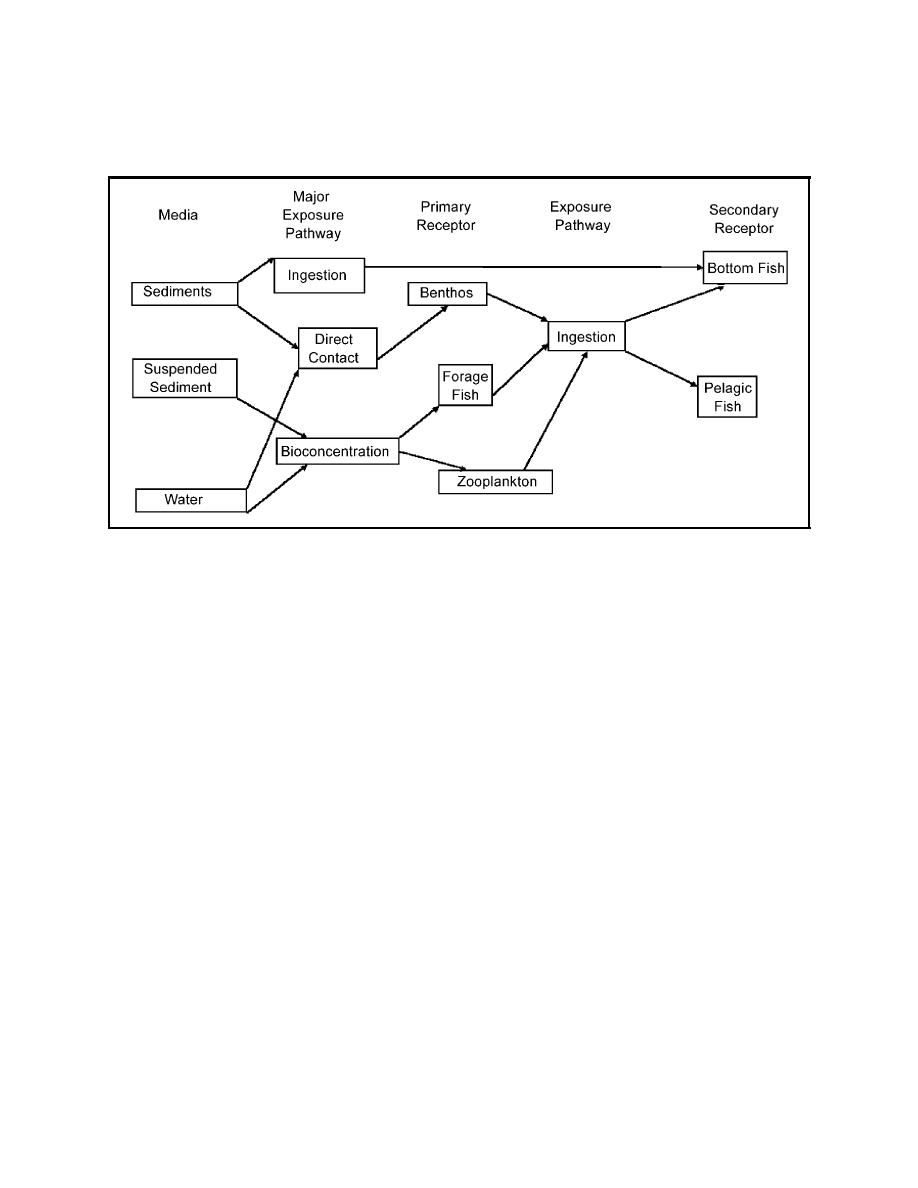 |
||
|
|
||
|
Page Title:
Figure 1. Example of a conceptual model for ecological exposure pathways in an aquatic environment. |
||
| |||||||||||||||
|
|
 Technical Note DOER-R1
September 1998
technology under consideration. The first step in making this integration is the development of a
site conceptual model (Figure 1).
Figure 1. Example of a conceptual model for ecological exposure pathways in an aquatic environment.
Integrating these four data sources lends risk assessment its unique analytical advantages (Table 1):
it is site and technology specific; flexible; iterative; inclusive; objective; able to avoid the false
positives associated with simple statistical comparisons between the reference and test sediments
(i.e., the assumption of risk simply because bioaccumulation is statistically higher when compared
to reference); and transparent; and it provides a value added at sites accommodating multiple
projects.
Risk assessment also has limitations. In particular, risk assessment results are not transferable from
site to site; risk assessments depend on various extrapolations; risk assessment requires careful and
complete communication of uncertainties.
Any particular risk assessment conducted at a dredged material site is specific for that site and the
proposed dredged material management option. This means that risk assessment results from one
site or technology are not directly transferable to another site or another technology. Upon initial
examination, this may seem disadvantageous. The manager may ask "Why not do one risk
assessment which provides a `safe' value for use at all sites?" Such an approach would have to be
very conservative to cover unanticipated contingencies and variations that will arise among sites
and technologies. Such conservatism would be constraining for most sites.
The informed application of risk assessment avoids such constraints by considering site-specific
information. In particular, although risk assessors cannot change the toxicity of a specific chemical
to a particular organism, they can design alternatives to modify the estimated exposure of the
organisms to the chemical based on more accurate site-specific information.
4
|
|
Privacy Statement - Press Release - Copyright Information. - Contact Us - Support Integrated Publishing |